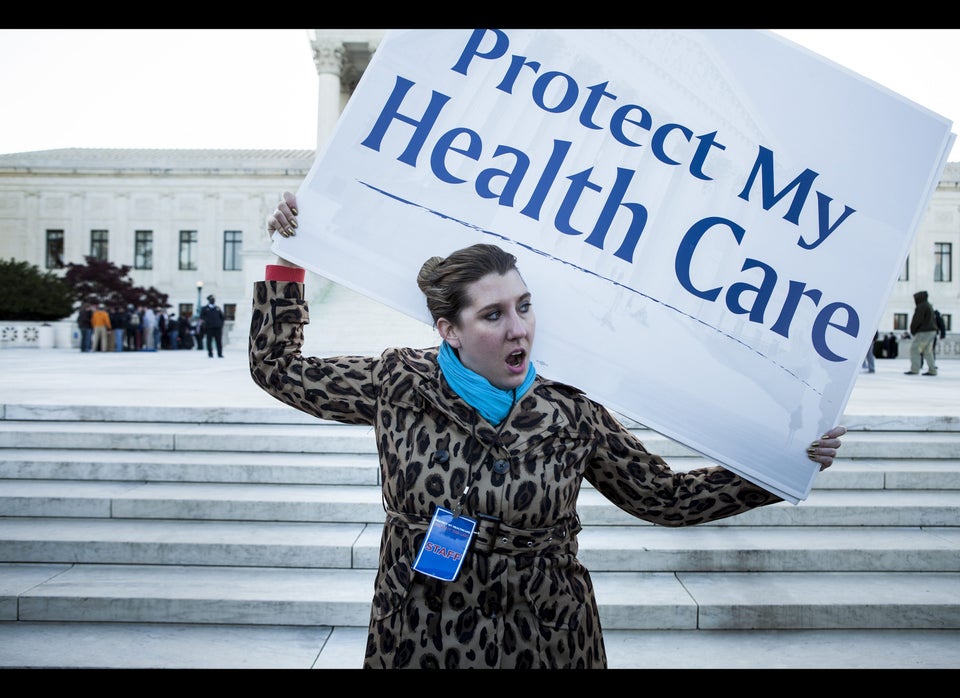
Sometimes, even having health insurance isn't enough. Nick Shumaker faced down the shortcomings of his coverage when he learned the medicines to treat his hepatitis C would cost him and his wife $10,000 they just didn't have.
Shumaker, 59, and his wife are covered by the health insurance she gets from her job for $230 a month -- but before their benefits kick in, they must meet a $5,000 deductible that's more than they can spare on their $42,000 income. What's more, the out-of-pocket share for Shumaker's costly prescriptions was going to total another $5,000 during the six months of treatment.
"We basically live paycheck to paycheck," said Shumaker, who resides in Phoenix. He started his treatments in April after he got financial assistance from the drug company Genentech and several nonprofits, including the Hampton, Va.-based Patient Advocate Foundation, which referred him to The Huffington Post.
Without that help, which totalled about $12,400, Shumaker said he would've left the illness untreated -- as he had since 1993, risking his liver and kidneys. "I would've lived out my life as far as I could with hepatitis C because financially I couldn't afford it," he said.
As Democrats gather this week in Charlotte, N.C., to renominate President Barack Obama, the talk of his signature domestic achievement, the Affordable Care Act, may make it sound as if every American will be covered. The health care reform law is the largest expansion of the health care safety net since the 1965 creation of Medicare for the elderly and disabled and Medicaid for the poor. The act will provide coverage for about 30 million people.
But in America today, having health care insurance is no guarantee one will be able to manage the bills when they come due. Some people earning less than $30,000 a year will remain at risk for expenses that go beyond their means. Those individuals may face choices between skipping care and staying sick, or getting treatments they know could put them into debt.
The law targets its assistance to people whose incomes are just above the federal poverty line, which is $11,170 for a single person this year. But the financial help gets smaller as incomes rise, and cuts off completely at 400 percent of poverty, $44,680 in 2012. This could leave some lower-income people with high medical expenses facing out-of-pocket costs as high as $2,000 to $6,000 a year.
"This is pretty skimpy coverage that is going to mean that a lot of people are going to have to dip pretty deep into their pockets if they have a serious medical problem," said Timothy Jost, a professor at the Washington and Lee University School of Law in Lexington, Va. "People will still, in some circumstances, not get the care that they probably need." Jost is a consumer representative to the National Association of Insurance Commissioners, which advises the Obama administration and states on implementing the law.
"On the other hand, it's better than nothing and it's better than what they're getting now," Jost said. "For most people who are uninsured, it's going to mean a whole lot less exposure than they have now."
In addition to expanding coverage to the uninsured, the law forbids health insurance companies from turning away anyone because of health or charging higher rates to women or sicker people. The law also requires insurance plans to cover so-called essential health benefits, such as emergency care, hospitalizations and prescription drugs.
"There's a big, big change moving from where we are now to 2014," said Sara Collins, the vice president for affordable health insurance at the Commonwealth Fund, a New York-based research institution.
For those at the lowest end of the income scale, the Affordable Care Act should live up to its name. People who earn up to 133 percent of poverty, $14,856 in 2012, will be eligible for Medicaid benefits with no premiums and minimal cost-sharing -- unless they live in states that refuse to participate in the law's expansion of the program. Between 100 percent and 250 percent of poverty, individuals and families will be eligible for tax credits that will significantly limit their premiums and out-of-pocket costs.
Yet those who make at least two-and-a-half times the federal poverty level, which is $27,925 this year for an individual, could still wind up with medical bills they can't afford. Above this level, the tax credits for out-of-pocket expenses like deductibles and co-payments disappear and the tax credits for health insurance premiums get less generous.
The financial assistance provided by the law will be enough to prevent most people from falling deep into debt or having to declare bankruptcy, as can happen to uninsured and underinsured people today, said Collins, of the Commonwealth Fund. "Most of that is going to go away," she said. "There are clearly risks to people who have high out-of-pocket costs in a given year but you're not going to have these catastrophic bills that aren't covered by peoples' health plans."
From 400 percent of poverty up, individuals will have to pay the full cost of their health insurance and all of their out-of-pocket expenses. Going without coverage will incur a tax penalty under the law's "individual mandate" but anyone who can't find a plan that costs less than 8 percent of their annual income is exempt.
"For people with incomes above 250 percent of the poverty level, they're going to have a lot of 'skin in the game.' It's going to be pretty high-deductible insurance or pretty high cost-sharing insurance," Jost said. Congress decided the government couldn't afford to spend what it would take to provide everyone with more comprehensive coverage, he said.
There will be five types of health insurance with different levels of coverage available on the "exchanges" that the law creates: Platinum, Gold, Silver, Bronze and a "catastrophic" plan with minimal benefits that's only for people under 30 or those who can't find another plan for less than 8 percent of their income.
All plans will come with an "out-of-pocket maximum," which is the most a customer would have to pay within a year no matter what his or her expenses are. That will range from about $2,000 to about $6,000, depending on income, according to a report co-authored by Massachusetts Institute of Technology economist Jonathan Gruber.
Bronze plans will be the cheapest and are supposed to cover just 60 percent of medical costs, leaving patients responsible for the rest. "The bronze plans are, I think, frequently going to cover less than individuals may necessarily expect," said Carmen Balber, director of Consumer Watchdog's Washington office. "Since we're just tacking this all on top of the existing health insurance system, we're trying to adapt an already extraordinarily complex and confusing system to a law that has a lot of new provisions."
HuffPost Live will be taking a comprehensive look at the persistence of poverty in America Sept. 5 from 12-4 p.m. EDT and 6-10 p.m. EDT. Click here to check it out -- and join the conversation.

